Overview
Client: A large global consumer brand undergoing a Lean-Agile transformation
Approach: A customized cohort programme for product managers and product owners (Agile Product Management, Product Owner SAFe Scaled Agile Framework, Flight Levels, Kanban, Scrum)
Year: 2023
Industry: Appliance manufacturing, IT
A large global consumer brand has been transforming their IT organization since 2020 and are realizing positive outcomes. Critical to this success are the roles of product management and product owner. Via our targeted learning journey concept, we supported the customer to embrace Visions, Strategies and Roadmaps on team and ART level to further elevate its IT organization. This learning journey, “Owning your product - now and in the future” which is designed and delivered by improuv is described in this case study.
Lorem ipsum dolor sit amet, consectetur adipiscing elit. Ut elit tellus, luctus nec ullamcorper mattis, pulvinar dapibus leo.
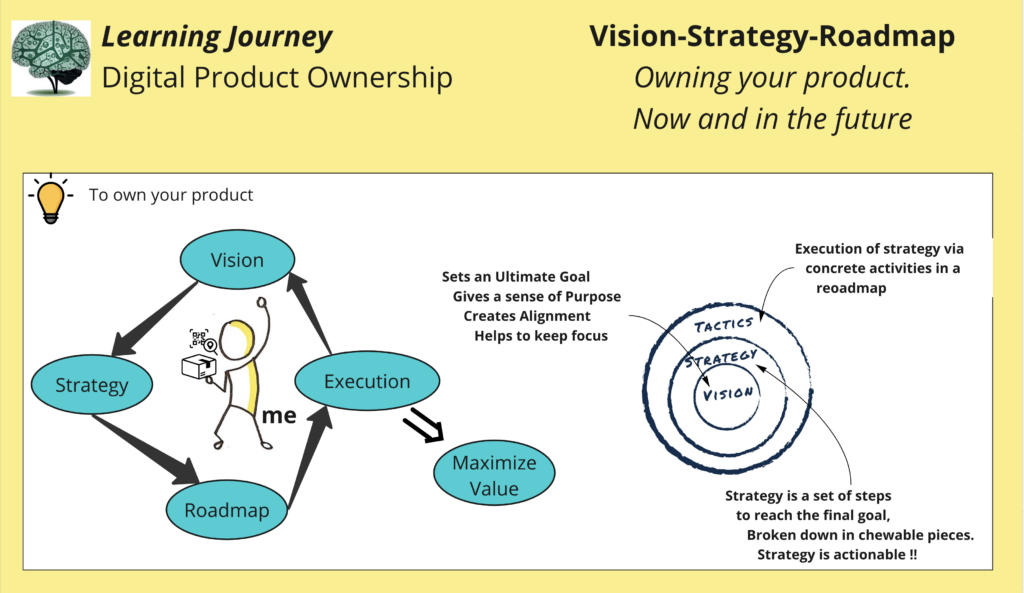
In large organizations, teams and Agile Release Trains (ARTs) encounter challenges in creating practical and impactful Visions, Strategies, and Roadmaps (VSR) that align with high-level objectives. The difficulty lies in translating these objectives, often buried in impractical presentations, into actionable plans for individual teams and ARTs.
The organization is committed to empowering teams by redistributing ownership of product visions, strategies and roadmaps.
To support this they initiated this cohort program, where product owners and product managers brought up the following themes:
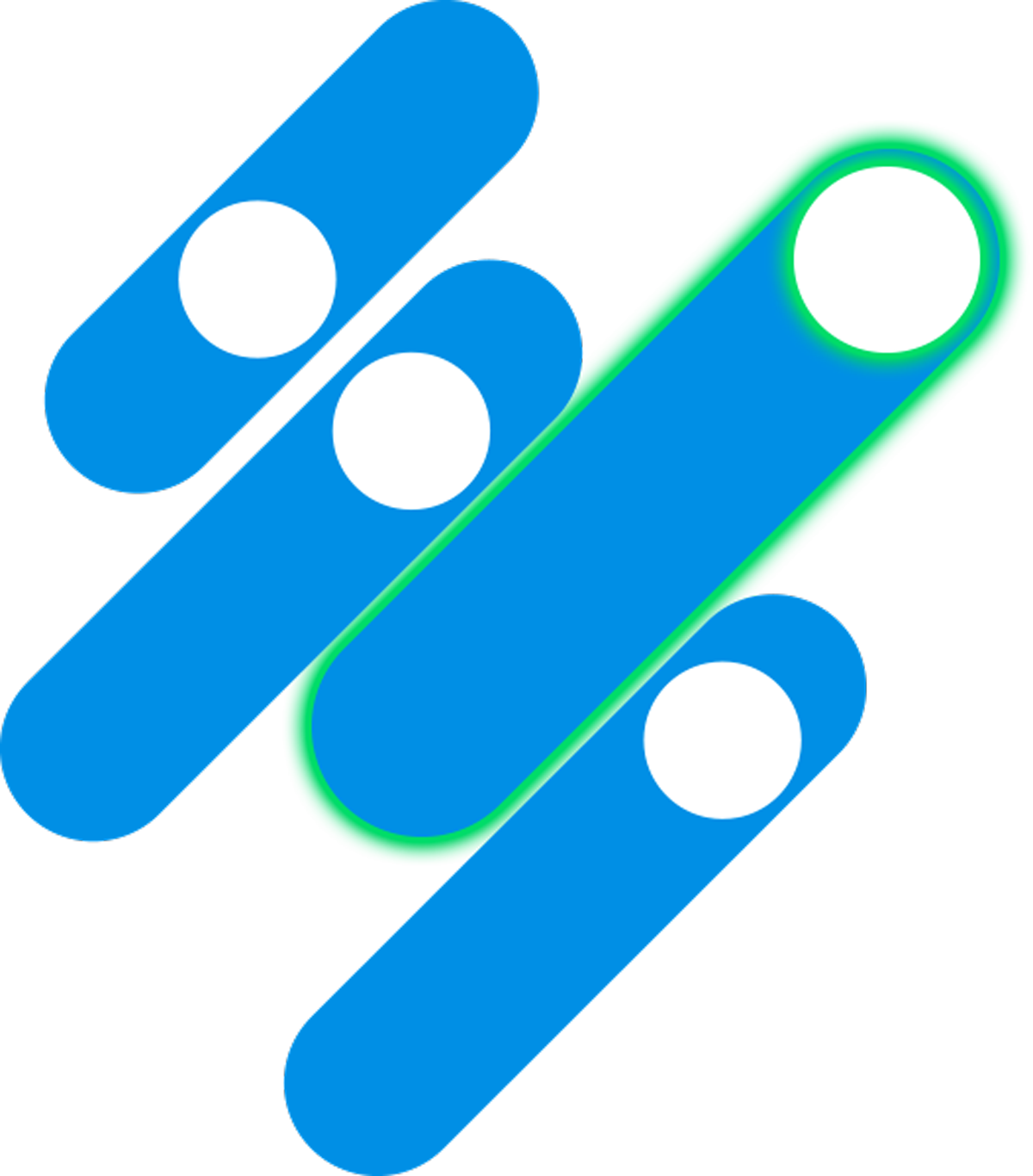
Via definition of Vision, Strategy and Roadmap many of the participants, Product Owners, Product Managers and their teams were able to take concrete moves to increase ownership of their products.
At the end of the programme the cohort participants agreed to set up a Community of Practice for the Vision, Strategy and Roadmap, and planned a “re-meet”.
“Everyone can now understand and explain the ideas and direction for our products and we have better focus.”

“We can use the VSR to decide our features and the roadmap and it helps us to say “NO – this idea does not fit to the agreed vision and strategy”

“The journey to create Vision, Strategy and Roadmap is valuable in itself (perhaps in some cases adding the most value)”

“We found out the view of the product is very different between the development team and business!! in "ALL" ways. Now we can do a gap analysis to get alignment.”







After a kickoff session with product managers / owners, three cohort groups were formed. For each of the three cohort groups, three sessions (3 sessions per group) were run where improuv transformation coaches offered insights into the themes and facilitated collaborative learning and the sharing of experiences and experiments.
The topics for the cohort sessions were
Additionally, two cross-cohort sessions provided a platform for sharing and discussing experiments, experiences, and outcomes across the different cohort groups.
A number of weeks separated each session so that participants could define and implement experiments to share in the next session.
Witnessing cohort participants implement ideas in practice, observe real impact, and share their experiences was both fascinating and highly encouraging.
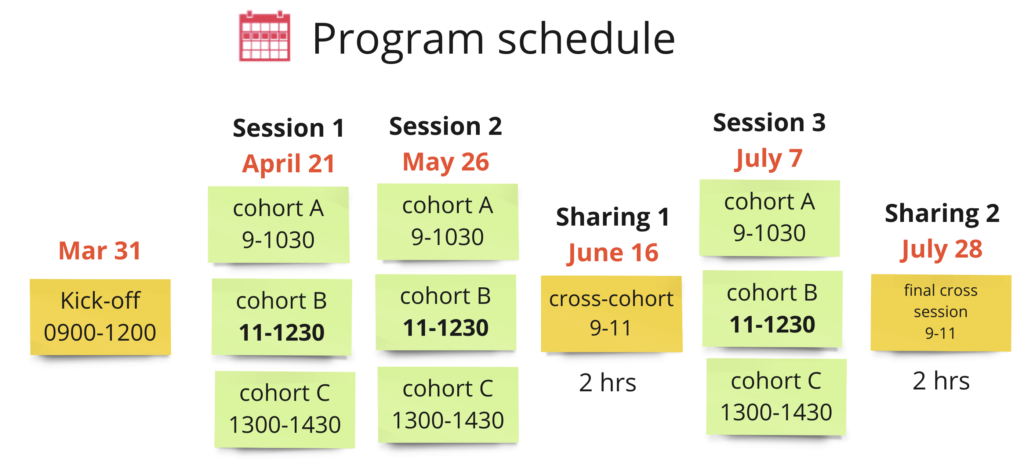
The North Star vision is one that is always there, provides direction, inspires, is clear and visible, and is attainable with a stretch. It is not dependent on where you are today; it exists in the future as a guide.
Within the cohort, discussions centered around the benefits of vision, the appropriate scope for visions and strategies, practical applications, and strategies to make visions impactful. Participants formulated experiments and, in the subsequent session, shared their results. Notably, some experimented with the Product Vision Board by Roman Pichler, organizing workshops with their teams to define and align product visions and establish common goals.
The Product Strategy outlines the path that we will take to create value. The value we create may be customer value, employee value or supplier value. The strategy connects our vision to the actual products and services we deliver through our roadmap, and guides us in deciding what to do (and not do) to achieve our desired outcomes.
The cohort engaged in discussions on practical aspects such as when, how, and by whom the strategy should be created, how to manage it effectively, and methods to make it impactful. The cohort considered the strategy as an iterative learning process, promoting regular reviews and updates. Some participants experimented with impactful strategies using Objectives and Key Results (OKRs) or drawing inspiration from Flight Levels. The Flight Levels-Strategie Board was explored as a visual tool to connect actionable strategy with work items through measurable outcomes, potentially visualizing the product vision as well.
For the roadmap session we asked (for a bit of fun) ChatGTP to provide the initial statement:
Ultimately, the roadmap serves as a crucial tool for translating the strategy into measurable and actionable steps. It provides guidance and alignment on priorities, offering a target picture to visualize the direction.
An impactful variation is thegoal oriented roadmap, which shifts the focus from features to measurable goals and outcomes.
An illustrative example showcased how a department leveraged the Goal Oriented roadmap, providing the Agile Release Train (ART) with a more comprehensive and dynamic understanding, staying ‘alive’ beyond quarterly PI planning sessions. This approach ensures everyone comprehends the ‘why’ behind their actions.
Another team planned to combine product visions, strategies and roadmaps within a Flight Levels Strategy Board to visualize the entire planning process.
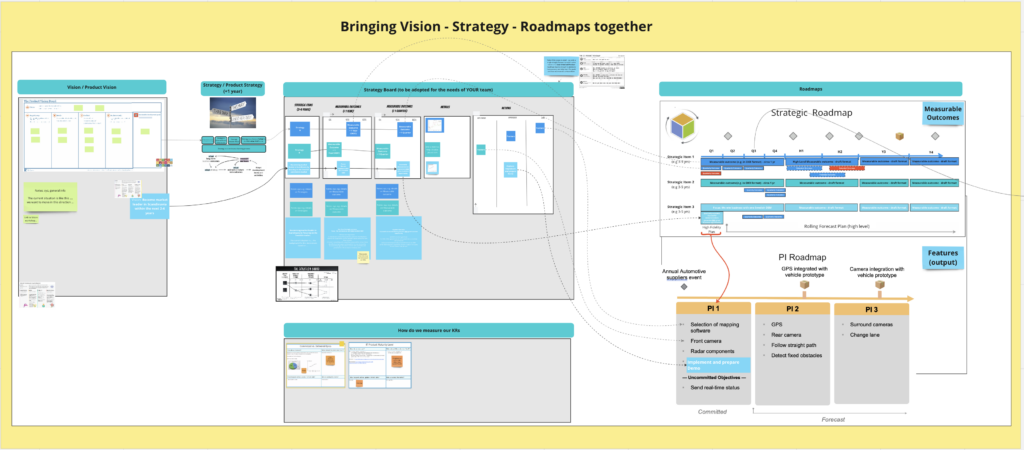
The final act was a cross-cohort meeting where participants of all cohorts shared their key learnings and takeaways, and identified their next steps. In this final session. Other product managers / product owners who did not participate in the learning program cohorts (mostly due to time constraints) had the option to join the final session and observe the outcomes.
Focusing on Product Vision, Strategy, and Roadmap also on ART and team levels enhances ownership in large organizations.
Collaborative learning, sharing insights, experiences, and experiments leads to more impactful learning experiences.
Conducting experiments and sharing results sparks ideas for implementing improvements in teams or ART/Areas.
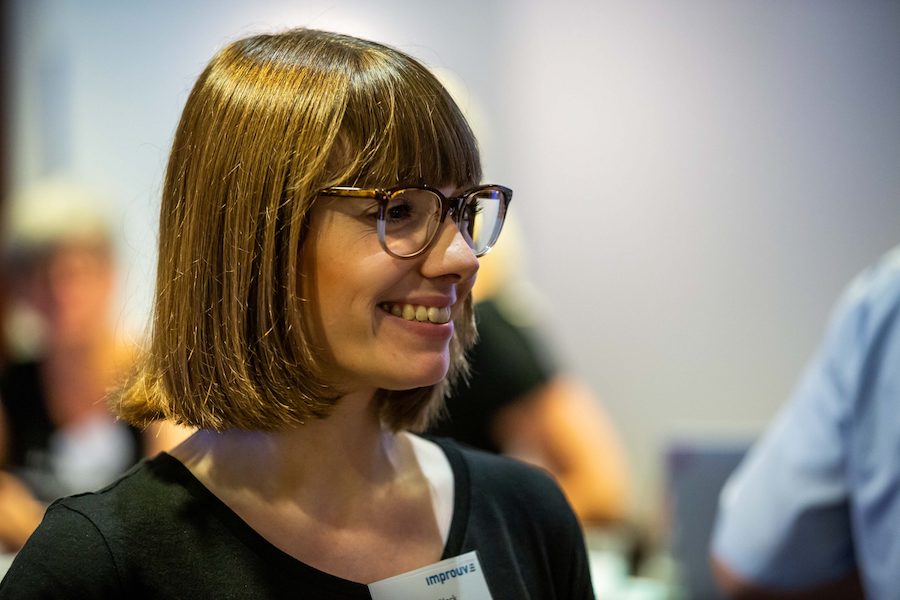
Our offer is as individual as your task. Talk to us, we listen. We take the time to understand your situation. Holistically. Without obligation. Promise.
Arrange a consultation today.
Case study of a SAFe implementation that led to a shared product vision and team spirit.
Case study on how transparency and self-organisation ensure sustainable change.
Artikel wurde in den Warenkorb gelegt.